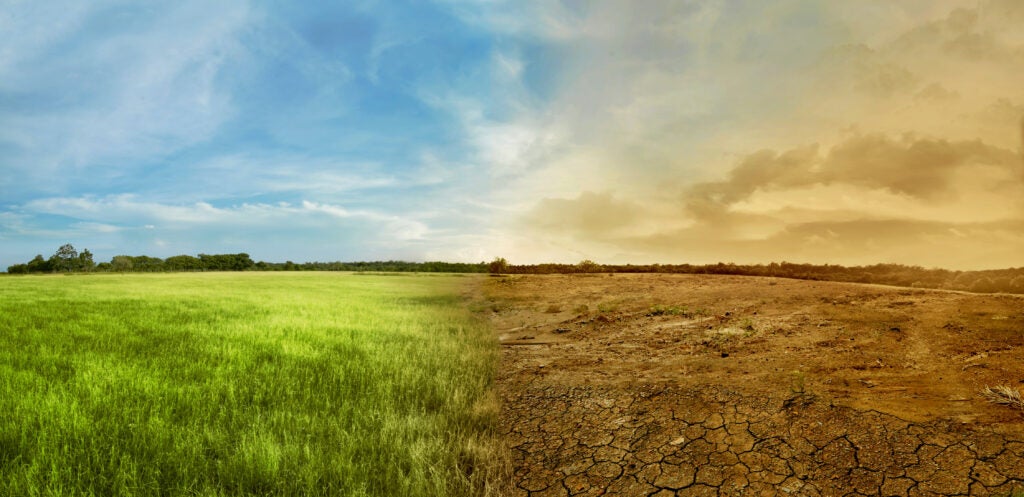Breaking Down the Social Cost of Carbon: Where our measurements fall short
By Raphael Calel, Ph.D; Associate Professor in the McCourt School of Public Policy

The Inflation Reduction Act is the biggest legislative step the U.S. has ever taken to tackle climate change. The U.S. is on track to reduce its greenhouse gas emissions by as much as 30% by 2030 compared to the 2005 peak, but projections indicate this new legislation could push that number to 40%.
Even at that rate, though, there is still a great deal more to do to address the climate crisis. Moving forward requires a better appreciation of the far-reaching benefits of climate action.
The U.S. government uses a number known as the “social cost of carbon” to represent the benefit of climate action. It is an estimate of the additional damage that will be caused by emitting just one more ton of carbon dioxide. If we stopped that ton of carbon dioxide from being emitted, that’s how much damage would be averted.
The social cost of carbon informs everything from new vehicle mileage standards to the U.S. position in international climate negotiations, and understandably, it has been hotly contested in the courts. However, the number has some serious limitations: it fails to take into account the actualized global climate fluctuations in our epoch.
The first step in calculating the social cost of carbon is to forecast the long-term upward trend in global temperatures. Importantly, the long term trend calculations have not historically taken into account the unpredictable fluctuations in global temperatures around the long-term trend. This may seem like a small oversight, but in a new study my colleagues and I found that these fluctuations will create anywhere from $10 trillion to $50 trillion dollars of additional economic damage over the next 200 years, when measured in today’s money. And significant as these economic costs are, the human toll will invariably be far harder to stomach.
One reason for these costs is that, while some years will be cooler than the trend and others will be hotter than the trend, extreme years will have disproportionately harmful consequences. And when this additional source of risk is included in the modeling, you also tend to get several extreme years in a row, sometimes even decades. The more typical years aren’t enough to compensate for this risk.
The second reason is that a climate that is more responsive to greenhouse gas emissions will also be more variable. It is difficult to predict exactly whether a doubling of atmospheric carbon dioxide would lead to a 5˚F or 10˚F degree increase in long-run global temperatures, but the higher that number is, the worse the year-to-year fluctuations are, too. Being dealt a bad hand in the climate casino, then, doesn’t just mean higher global temperatures, but also more unpredictable temperatures–a double whammy.
Yet, despite creating trillions of dollars in damage, these temperature fluctuations have almost no effect on the current measured social cost of carbon. The reason is that, in an already warmer world, emitting one extra tonne of carbon dioxide hardly changes the year-to-year fluctuations. Ultimately, we will face this risk whether or not we emit that one extra tonne of carbon dioxide, and with climate change, the harm will be much greater.
The fact that we cannot avoid this risk makes it practically invisible to anyone who is narrowly focused on the social cost of carbon, but it also makes it more important that we prepare for it. If we cannot avoid this risk, then we need to make investments to prevent the future climate extremes from wreaking havoc. There are many things we can and probably should invest in – the need for power grids and infrastructure that will better withstand future weather extremes is maybe too obvious to mention, but consider the need to shift our food supply toward a more resilient model, to build up greater disaster readiness capabilities, to invest in social programs to help communities in need of resettlement, and more.
Because we’ve been blind to the costs of global variability, we’ve underestimated the benefits of all these investments by trillions of dollars. Whilst there is still a pressing need to reduce emissions at a faster rate to avoid predictable climate change, we also need to dramatically scale up our investments in adaptation to lessen the costs of the unpredictable, but inevitable, climate extremes.
The Inflation Reduction Act has succeeded politically, in part, because of its focus on creating tax breaks and rebates to bring down the costs of clean technologies. Investments to build resilience to climate extremes also have significant promise as a legislative agenda. Many of these investments would bring substantial benefits even in the absence of climate change, and poorer disaster-prone communities would likely have the most to gain, including across the South, the West, and along the Gulf Coast. Their elected representatives could support these kinds of investments without ever being forced to utter an unpopular word about “climate change.” These investments can be a cornerstone of a more populist climate agenda.
Raphael Calel, an Associate Professor in Georgetown’s McCourt School of Public Policy, is an applied environmental economist engaged in the evaluation of climate change policy. His research investigates the implementation and economic impacts of the EU Emissions Trading System and the Clean Development Mechanism, as well as the challenges of forecasting the economic damages from climate change.
